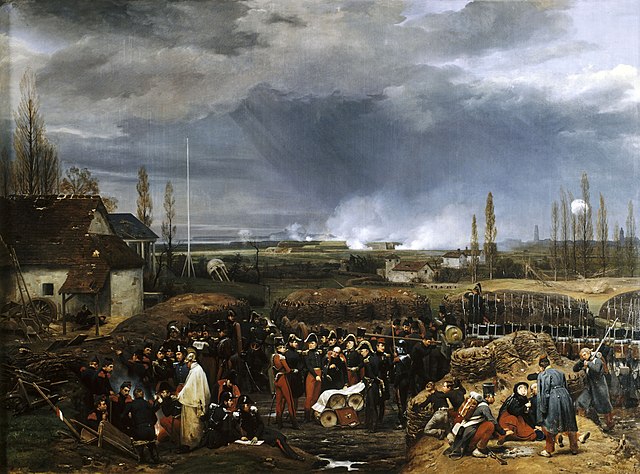Top Qs
Timeline
Chat
Perspective
Antwerp Citadel
From Wikipedia, the free encyclopedia
Remove ads
Antwerp Citadel (Spanish: Castillo de Amberes, Dutch: Kasteel van Antwerpen) was a pentagonal bastion fort built to defend and dominate the city of Antwerp in the early stages of the Dutch Revolt. It has been described as "doubtlesse the most matchlesse piece of modern Fortification in the World"[1] and as "one of the most studied urban installations of the sixteenth century".[2]
Remove ads
History

The citadel was designed by the Italian engineer Francesco Paciotto and built on the orders of the Duke of Alva. Initial construction was completed in 1572. After the Sack of Antwerp (1576) the citizens partially demolished the fortification, but it was reconstructed after the Fall of Antwerp (1585).
The citadel saw action towards the end of the Napoleonic Wars, when it was defended by determined Bonapartists. The Siege of Antwerp (1814) continued for a month after Napoleon's abdication.
After the Belgian Revolution of 1830, Dutch forces remained in control of the citadel until the Siege of Antwerp (1832).
Demolition began in 1874 and was completed in 1881.[3] The site became a new neighbourhood of the city, Zuid, in which the most prominent construction was the new building for the Royal Museum of Fine Arts Antwerp.
Remove ads
Governors of the citadel
In Spanish the title of the governor of the citadel was Castellano de Amberes ("Castellan of Antwerp").
- 1576: Sancho d'Avila
- 1577: Philippe III de Croÿ
- 1587–1596: Don Cristóbal de Mondragón
- 1606-1622: Don Íñigo de Borja
- -1674: Don Pedro Sanpayo.
- 1674-1678: Don Mateo de Villegas.
- 1679–1693: Don Francisco Marcos de Velasco
- 1693-1695: Don Diego Gomez, Marques of Espinosa
- 1695-1700: Don Pedro Alvarez de Vega.
- 1700-: Don Luis de Borja, Marquess of Caracena.
- 1830–1832: David Hendrik Chassé
- Don Fernando de Solís y Vargas de Carvajal, died 1669.
- Don Geronimo de Cobos, died 1643
- Don Diego de Heredia y Arambulo, died 1704
- Don Antonio de Castro y Tello, died 1659
- Don Julian Martinez de la Parra
Remove ads
Our Lady of the Citadel
In the Sint-Joriskerk there is still a brotherhood called Our Lady of the Citadel (Dutch: Onze-Lieve-Vrouw van het Kasteel).[4]
References
Wikiwand - on
Seamless Wikipedia browsing. On steroids.
Remove ads


